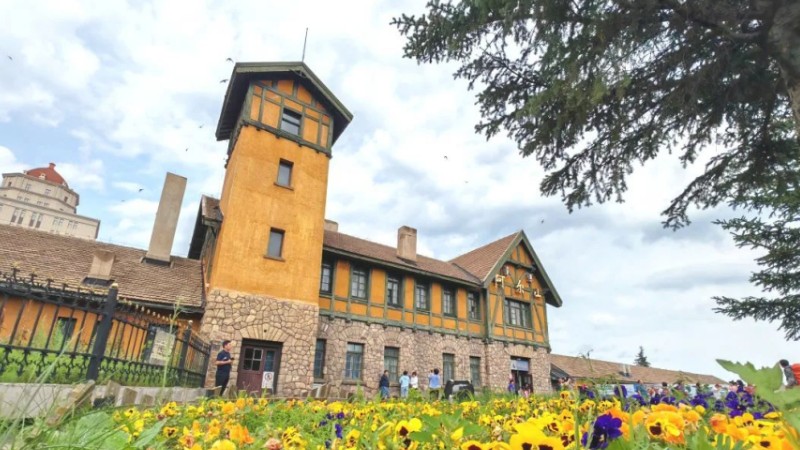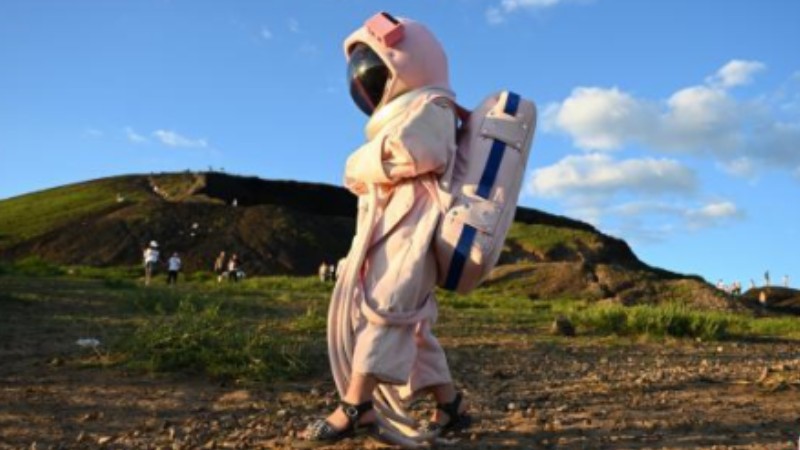Antelopes on road to safety

Tibetan antelopes cross the Qinghai-Tibet Highway in a leisurely fashion and head toward the Sanjiangyuan area in Northwest China's Qinghai province, last month. ZHANG HONGXIANG/XINHUA
Located in Sanjiangyuan National Park in Northwest China's Qinghai province, Hoh Xil is an important habitat for Tibetan antelopes, which are under first-class State protection.
Around May each year, tens of thousands of pregnant Tibetan antelopes start their migration to Hoh Xil to give birth and then leave with their offspring in late July.
The Drolkar Lake area in Hoh Xil is a crucial birth ground for the species. During migration, they have to confront extreme weather and the threat from wild animals.

Two rangers examine a vehicle's engine during a recent patrol in Hoh Xil, which is located in Sanjiangyuan National Park in Northwest China's Qinghai province. ZHANG HONGXIANG/XINHUA
Patrollers in Hoh Xil have been guarding Tibetan antelopes for decades, and send calves left behind or that get separated from the herd, to the wildlife rescue center at the Sonam Dargye protection station.
Since the establishment of Hoh Xil National Nature Reserve in 1997, six such protection stations have been built.
In addition to working in shifts, batches of rangers go deep into the hinterland.
Extreme conditions can be difficult to cope with. The patrols work at an average elevation of more than 4,600 meters, where oxygen levels are likely to be 55 percent lower than at sea level.
Up to now, three generations of patrols have guarded Hoh Xil, which has become a landmark area for wildlife protection and ecological protection in China.
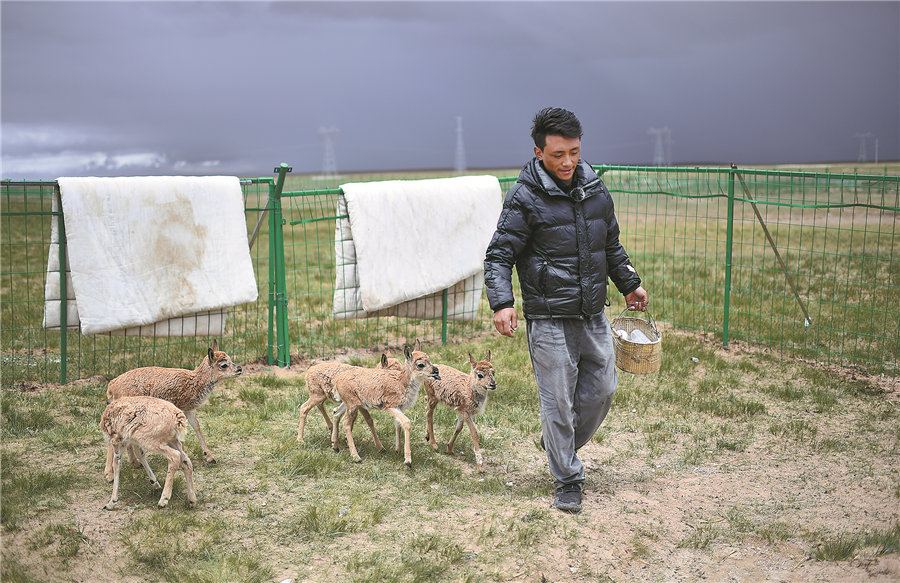
Several rescued Tibetan antelope calves enjoy a new and safe home at the Sonam Dargye protection station in Hoh Xil. ZHANG HONGXIANG/XINHUA
They have witnessed the dramatic change over the past decades in the region, where poaching sprees had once driven the species to the edge of extinction, causing its population to drop from 200,000 to 20,000 during the 1980s.
Tibetan antelopes were hunted for their wool, which can be made into expensive shawls. Each shawl, priced as high as $50,000, was made at the expense of up to five antelopes.
Since the early 1990s, China has initiated a string of actions to push back against poaching on the Qinghai-Tibet Plateau.
In 1996, the provincial-level nature reserve of Hoh Xil was officially established, before its elevation to a national-level nature reserve the following year.
In 2021, the status of Tibetan antelopes was recategorized down from "endangered" to "near threatened", according to the National Forestry and Grassland Administration.

A patrol navigates through heavy snow. ZHANG HONGXIANG/XINHUA
Thanks to the country's active anti-poaching and biodiversity protection efforts in recent years, Hoh Xil is now home to more than 70,000 Tibetan antelopes.
"Despite the high altitude, frigid temperature and thin air, Hoh Xil is a paradise for wildlife. Tibetan antelopes, wild yaks, Tibetan wild donkeys, Tibetan foxes, brown bears and various other species live here," says Wang Xiangguo, director of the management bureau of Sanjiangyuan National Park.
"Nowadays, Hoh Xil is China's largest world natural heritage site, boasting the highest average elevation and maintaining a high-altitude ecosystem and the iconic species of the Qinghai-Tibet Plateau," says Wang.
He adds that it has become a vital "sanctuary of life" for once endangered rare wildlife.
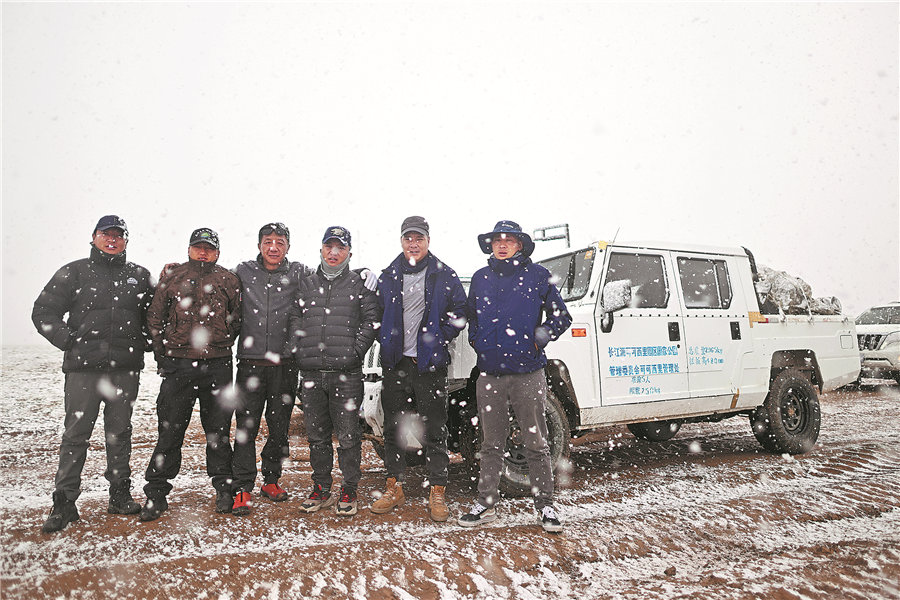
A patrol from the Drolkar Lake protection station of Hoh Xil pose in the snow for a photo. ZHANG HONGXIANG/XINHUA

Rescued baby Tibetan antelopes are fed. ZHANG HONGXIANG/XINHUA
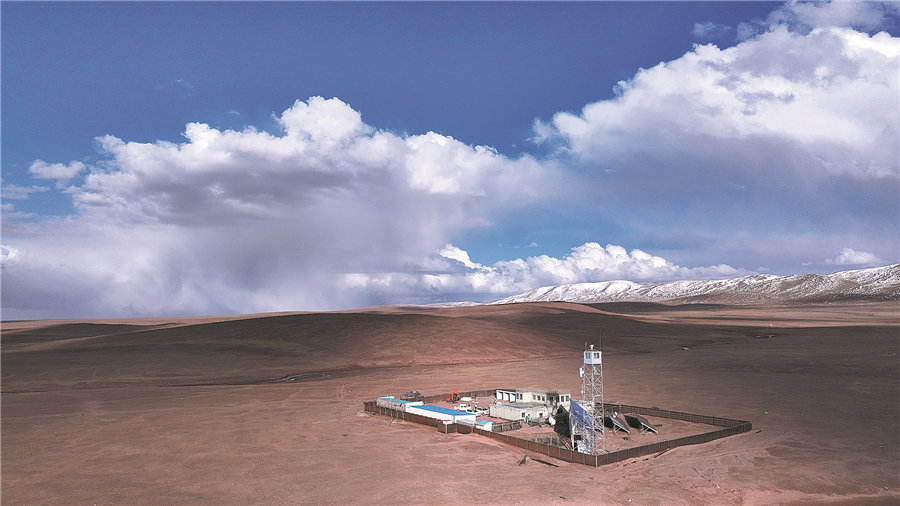
A bird's-eye view of the Drolkar Lake protection station. ZHANG HONGXIANG/XINHUA

Guo Xuehu, deputy head of the station, has worked there for 18 years. ZHANG HONGXIANG/XINHUA
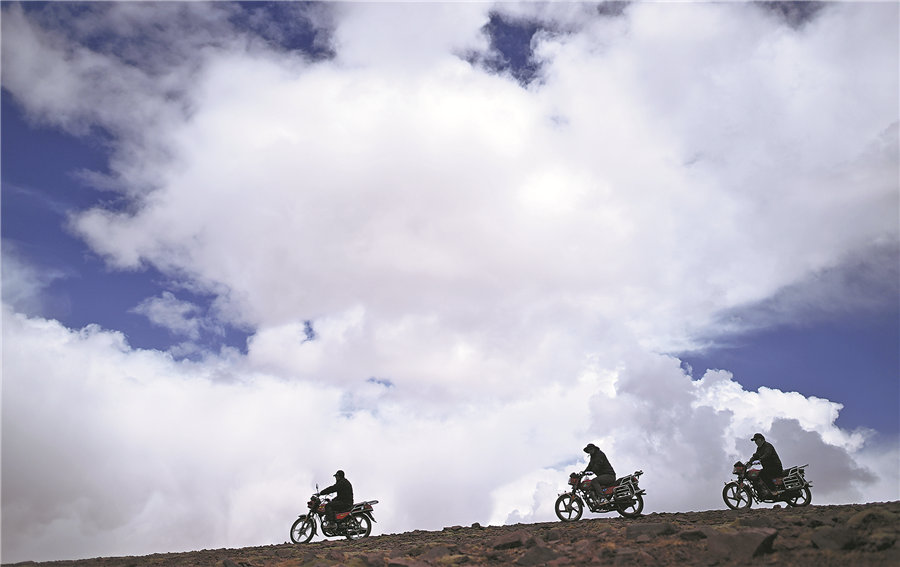
A motorbike patrol is silhouetted against a dramatic sky. ZHANG HONGXIANG/XINHUA
Photos
Related Stories
- Ecology project brings clear water, Asian Games to Zhejiang river
- Infographics: Explore China's national parks
- Building Beautiful China contributes to global environment governance
- A look at China's ecological progress
- Eco Forum Global Guiyang 2023 kicks off in southwest China
- Protection efforts see golden snub-nosed monkeys thrive
- China ratifies National Ecology Day to enhance public awareness, actions
- China ratifies National Ecology Day to enhance public awareness, actions
- China restores ecology via sci-tech means
- China's ecological conditions continue to improve in 2022
Copyright © 2023 People's Daily Online. All Rights Reserved.






